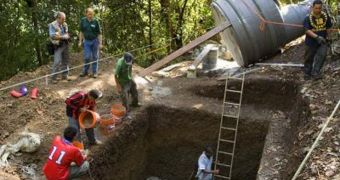With the help of an ultra-sensitive earthquake monitoring network, researchers were recently able to confirm the existence of standing waves called seiches in Lake Gatun. The body of water is a critically-important part of the Panama Canal system.
Apparently, these waves produce a peculiar seismic signal, that was identified using a remote sensing facility, operated by the Smithsonian Tropical Research Institute (STRI) on Barro Colorado Island.
The island is in fact the top of a former hill, which was surrounded by water as Lake Gatun was created. Due to its height, the gorge was not submerged, rather providing experts with an amazing outpost for conducting seismic research.
The STRI facility is using advanced detectors and seismometers to monitor seismic background signals. Understanding these signals could lead to improved earthquake forecasts, therefore helping save lives in the United States.
In the past 500 years, more than 100 tsunamis have been reported in the Caribbean region, so the fact that this network is installed here is no surprise. The 150 sensors it contains are part of the US Geological Survey (USGS) Global Seismographic Network.
The grid was put together after the 2004 earthquake and tsunami that battered the Indian Ocean basin, killing more than 230,000 people. Then-President George W. Bush allocated $37.5 million for this construction, and for new detection capabilities.
The Barro Colorado Island installation is a product of the collaboration between USGS, the US National Oceanic and Atmospheric Administration (NOAA), the University of Panama and STRI.
In addition to detecting the Earth's background hum, the echoes of distant earthquakes and the vibrations of ships and vehicles passing by, the grid was also able to pick out a signal of intermediate intensity, which was later found to be produced by standing waves.
Seiches occur on closed-off bodies of water, as waves traveling in all directions slam into each other. Measurements conducted at water level confirmed the STRI team's original assumptions, e! Science News reports.

 14 DAY TRIAL //
14 DAY TRIAL //